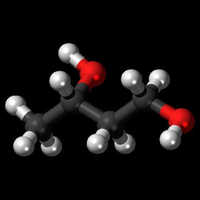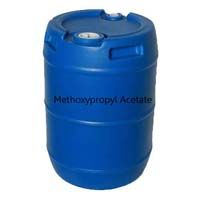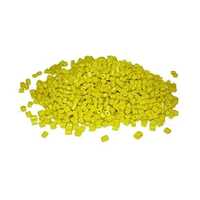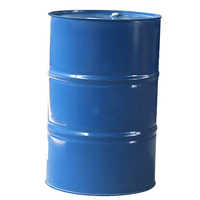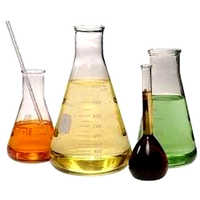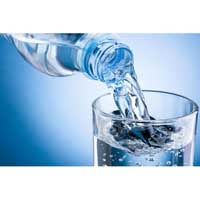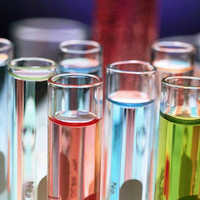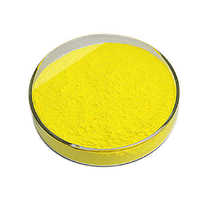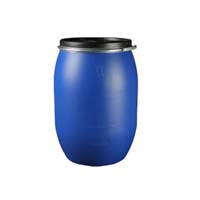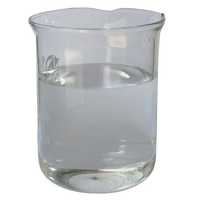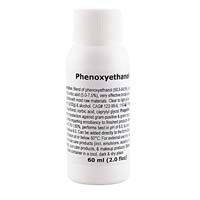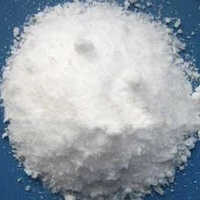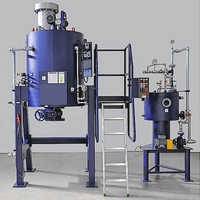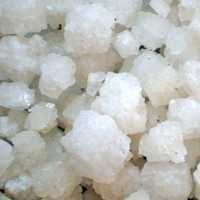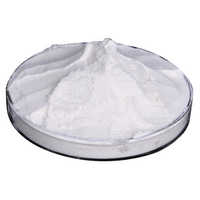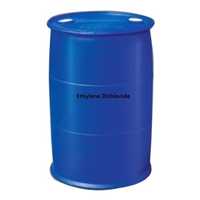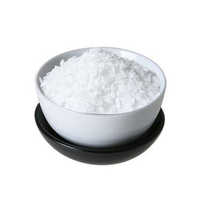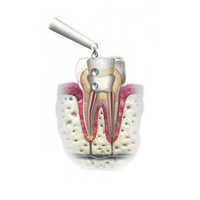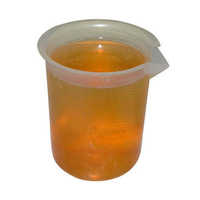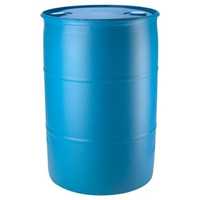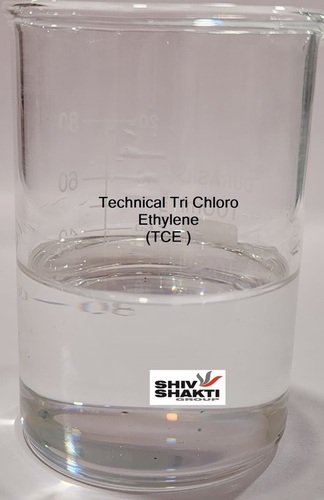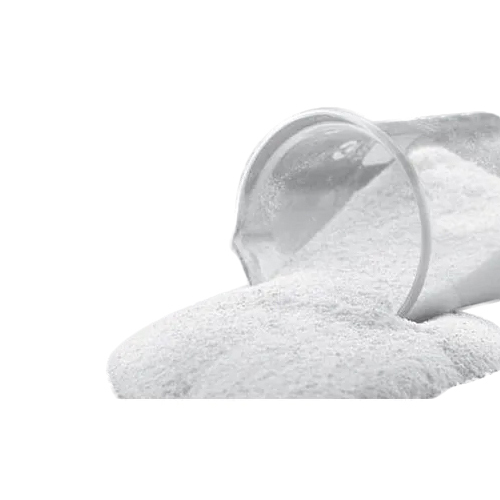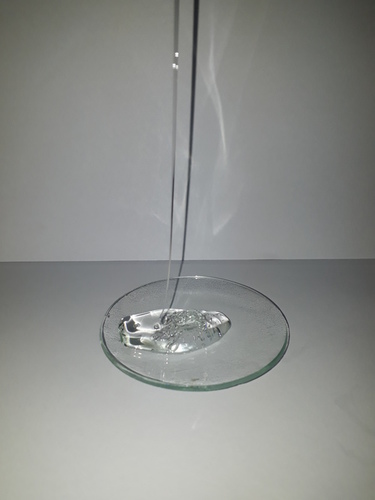Solvents
(6190 products)
Explore More Categories
Made in India
Octanol Chemical Application: Industrial
MOQ- 50000 Kilograms/Kilograms
Chemical Name - Octanol
Application - Industrial
10 Years
Ankit Enterprise
Product Showcase
White Phenyl Concentrate
Price: 155.00 INR (Approx.)/Kilograms
MOQ - 50 Kilograms/Kilograms
Type - Other, Phenyle
Physical State - Other, Liquid
15 Years
Business Type: Manufacturer | Distributor
SHIV SHAKTI INDIA
Made in India
Thixotorpe Veg Derivative Application: Improves Application Properties And Storage Stability.
Price: 358 INR (Approx.)/Kilograms
MOQ - 20 Kilograms/Kilograms
Application - Improves Application Properties and Storage Stability.
Physical State - Other, Powder
Usage - vegetable
19 Years
Business Type: Manufacturer | Supplier
HARMONY ADDITIVES PRIVATE LIMITED
D-Panthenol 75% Application: Used As A Moisturizer
Price Trend: 14.08-22.03 INR (Approx.)/Kilograms
MOQ - 50 Kilograms/Kilograms
Solubility - Soluble in water and Chloroform
Melting Point - 00
HS Code - 29362400
14 Years
Response Rate: 73.77%
Business Type: Manufacturer | Exporter
UNICORN PETROLEUM INDUSTRIES PVT. LTD.
Made in India
Dicyandiamide (Dcda) Application: For Industrial Use
Price: 100 INR (Approx.)/Kilograms
MOQ - 5 Kilograms/Kilograms
Chemical Name - C2H4N4
Type - Other
CAS No - 461-58-5
7 Years
Business Type: Manufacturer | Supplier
NOVEL CHEM
Made in India
Industrial Tetrahydrofuran
Price: 625400 INR (Approx.)/Kilograms
MOQ - 200 Kilograms/Kilograms
Chemical Name - Tetrahydrofuran
Application - Industrial
Purity(%) - 99
20 Years
Business Type: Manufacturer | Distributor
A. B. ENTERPRISES
Made in India
Isopropyl Ipa Application: Denaturing Ethanol
Price: 80 INR (Approx.)/Kilograms
MOQ - 100 Kilograms/Kilograms
CAS No - 67-63-0
Application - Denaturing ethanol,Rubbing alcohol antiseptic,Solvent for cosmetics and drugs
Physical State - Other, Liquid
1 Years
Business Type: Manufacturer | Distributor
RAJDOOT SPECIALITIES PRIVATE LIMITED
Made in India
Paint Thinner Solvent
14 Years
Business Type: Manufacturer | Distributor
GALAXY CHEMICALS
Methyl Isobutyl Ketone 108-10-1
Price: 125 INR (Approx.)/Kilograms
MOQ - 1000 Kilograms/Kilograms
Chemical Name - Methyl isobutyl ketone
Other Names - MIBK
CAS No - 108-10-1
3 Years
Business Type: Distributor | Exporter
S K ENTERPRISE
Made in India
Heptane Solvent Cas No: 142-82-5
MOQ - 200 Liter/Liters
Chemical Name - HEPTANE
CAS No - 142-82-5
Physical State - Liquid Coating
10 Years
Business Type: Manufacturer | Exporter
MEHTA PETRO-REFINERIES LIMITED
Made in India
High Grade Solvents
9 Years
Business Type: Exporter
ANTARES CHEM PRIVATE LIMITED
Made in India
Benzalkonium Chloride 50% Purity(%): 100 %
Price Trend: 2000.00 - 3000.00 INR (Approx.)/Kilograms
MOQ - 1 Kilograms/Kilograms
Chemical Name - Benzalkonium Chloride
Usage - Industrial
Purity(%) - 100 %
3 Years
Business Type: Manufacturer | Supplier
KARAN LABORATES
Solvent Cement Application: Pipe Joint
MOQ - 1 Piece/Pieces
Chemical Name - Solvent Cement
Type - PVC Solvent
Application - Pipe Joint
21 Years
Business Type: Manufacturer | Exporter
AQUACHEM INDUSTRIES PVT. LTD.
Made in India
Solvent C10 Usage: Industrial
Price: 90.00 INR (Approx.)/Kilograms
MOQ - 1 Kilograms/Kilograms
Chemical Name - C10 solvent
Other Names - C10 solvent
Classification - Other
8 Years
Response Rate: 100.00%
Business Type: Manufacturer | Distributor
SHAIKH PETROLEUM
Acetonitrile for HPLC and Spectroscopy
Price: 685 INR (Approx.)/Milliliter
MOQ - 500 Milliliter/Milliliters
CAS No - 75-05-8
Grade - LABORATORY Grade
Appearance - Clear colorless liquid
16 Years
Response Rate: 94.26%
Business Type: Manufacturer | Exporter
ALPHA CHEMIKA
Made in India
D Panthenol
Price: 1300 INR (Approx.)/Kilograms
MOQ - 5 Kilograms/Kilograms
8 Years
Business Type: Manufacturer | Supplier
DADIA CHEMICAL INDUSTRIES
Made in India
Acetone .
Price Trend: 22.00 - 58.00 INR (Approx.)/Kilograms
MOQ - 10000 Kilograms/Kilograms
6 Years
Business Type: Manufacturer | Exporter
TRIANGULUM CHEMICALS PRIVATE LIMITED
Made in India
Dimethyl Acetamide Chemical Cas No: 127-19-5
Price: 185 INR (Approx.)/Kilograms
MOQ - 160-210 Kilograms/Kilograms
CAS No - 127-19-5
Usage - industrial
Purity(%) - 99.5%
2 Years
Business Type: Manufacturer
MARUTI PETROCHEM
Made in India
Industrial Solvent
2 Years
Business Type: Manufacturer | Exporter
SUDARSHAN CHEM
Made in India
dearomatized aliphatic hydrocarbon solvent
Chemical Name - dearomatized aliphatic hydrocarbon solvent
Application - Industrial
8 Years
Business Type: Manufacturer | Distributor
BNJY ENTERPRISE
Verified Exporter
( Accepts only Foreign Inquiry)
Made in India
Diacetone Alcohol Solvent Liquid Coating
MOQ - 100 Kilograms/Kilograms
Chemical Name - Diacetone Alcohol Solvent
Physical State - Liquid Coating
Usage - Industrial
Business Type: Manufacturer | Exporter
SHREE BANKEY BEHARI LAL GROUP
Made in India
A Grade 100 Percent Purity Liquid Form Double Component Adhesive Coating Methylene Chloride
Price: 60 INR (Approx.)/Kilograms
MOQ - 1000 Kilograms/Kilograms
Chemical Name - CH2Cl2
Other Names - Dichloromethane
Classification - Double Components Adhesives
15 Years
Business Type: Manufacturer | Distributor
PRAKASH CHEMICALS AGENCIES PVT. LTD.
Indian Inquiries Only
Made in India
Liquid Tetra Hydro Furan Application: As A Precursor To Polymers And Industrial Solvent
Price: 240 INR (Approx.)/Kilograms
MOQ - 5000 Kilograms/Kilograms
Chemical Name - C4H8O
Application - As a Precursor to Polymers And Industrial Solvent
Physical State - Liquid Coating
2 Years
Business Type: Supplier | Trading Company
RIVAAN PHARMACHEM PRIVATE LIMITED
Made in India
Heavy Duty Clear Upvc Solvent Cement Liquid Coating
Price: 59.5 INR (Approx.)/Liter
MOQ - 500 Liter/Liters
Classification - Double Components Adhesives
Type - PVC Solvent
Physical State - Liquid Coating
2 Years
Business Type: Manufacturer | Supplier
KARAN POLYMERS PVT. LTD.
Made in India
Antigellant & Stabilizer
Price Trend: 2520.00 - 8000.00 INR (Approx.)/Unit
MOQ - 10 Unit/Units
22 Years
Business Type: Manufacturer | Exporter
K-TECH (INDIA) LIMITED
C9 Solvent Liquid Coating
Price: 55 INR (Approx.)/Kilograms
MOQ - 1Drum Kilograms/Kilograms
Chemical Name - C9 Solvent
Classification - Other
Type - Other
9 Years
Business Type: Manufacturer | Exporter
RAM SHREE CHEMICALS
Made in India
Butyl Acrylate Application: Solvent
Price: 106200 INR (Approx.)/Metric Ton
MOQ - 20 Metric Ton/Metric Tons
Molecular Weight - 128.171 g/mol Grams (g)
Other Names - BUTYL ACRYLATE; N-Butyl acrylate; 141-32-2; Butyl prop-2-enoate; Acrylic acid butyl ester
Form - Liquid
7 Years
Business Type: Manufacturer | Supplier
HWATSI CHEMICAL PRIVATE LIMITED
Verified Exporter
( Accepts only Foreign Inquiry)
Made in India
Iodobenzene 98% For Synthesis Application: Industrial
MOQ - 1 Kilograms/Kilograms
Application - Industrial
Usage - Industrial
Purity(%) - 98%
2 Years
Business Type: Manufacturer | Supplier
FUTUREY BIO
Made in India
UPVC Solvent Cement
7 Years
Business Type: Manufacturer | Exporter
WINGRIP PLAST PVT. LTD.
Solvents Manufacturers | Suppliers in India
| Company Name | Location | Member Since |
|---|---|---|
| K-Tech (India) Limited | Thane, India | 22 Years |
| Aquachem Industries Pvt. Ltd. | Ahmedabad, India | 21 Years |
| A. B. Enterprises | Mumbai, India | 20 Years |
| Harmony Additives Private Limited | Umbergaon, India | 19 Years |
| Alpha Chemika | Mumbai, India | 16 Years |
| Shiv Shakti India | Vadodara, India | 15 Years |
| Prakash Chemicals Agencies Pvt. Ltd. | Vadodara, India | 15 Years |
| Unicorn Petroleum Industries Pvt. Ltd. | Mumbai, India | 14 Years |
| Galaxy Chemicals | Gandhinagar, India | 14 Years |
| Mehta Petro-Refineries Limited | Mumbai, India | 10 Years |
What Is A Solvent?
An industrial-grade chemical compound called solvent is available in powder and liquid forms with different concentrations and purity levels. It also comes in solid as well as gaseous forms. The solvent available as a form of solution can dissolve in other liquids commonly known as solutes.
The solvents are used in a wide range of lab and industrial applications such as chemical processing, paint manufacturing, substrate surface cleaning, sterilizing medical equipment, essential oil extraction, polymer processing and many more. It comprises various compounds and chemicals that are mixed in highly proportionate amounts and chemically reacted. The selection of the compound depends on the properties of the solute, desired characteristics of the solution, and application areas.
Different Types of Solvents
In the market, there are many solvents which can be classified based on their chemical structure, physical properties, and usage. Given below are some common types of solvents:
- ->Polar solvents: They have a partial positive and negative charge that makes them readily soluble within various polar solutes that include salts, acids, and alcohols.
- ->Non-polar solvents: These solvents do not have a permanent dipole moment. They have a low dielectric constant, and there is no charge separation.
- ->Aprotic solvents: A solvent in this category does not have a hydrogen atom bonded to an oxygen or nitrogen atom. They are used in organic reactions.
- ->Protic solvents: These solvents have a hydrogen-oxygen or hydrogen-nitrogen bond and can donate hydrogen ions. They are used in acid-base chemical reactions.
- ->Halogenated solvents: These solvents are in high demand within industrial applications such as cleaning and degreasing due to their excellent capabilities to remove oil-based substances. They contain halogen atoms.
Benefits of Solvents
Solvents are highly beneficial as compared to other chemical compounds due to the following reasons:
- Dissolving power: As they are mostly available in liquid form, there are high chances of these chemicals getting dissolved in various types of chemicals or reactants.
- Reaction medium: These compounds can serve as a reaction medium in several chemical reactions to control the reaction rate by suspending reactants and products.
- Cleaning power: The solvents can also be used for manufacturing cleaning agents that can be used in homes, offices, hospitals, and industrial facilities to clean floors.
- Lubrication properties: There is a wide range of solvents that inhibits lubrication properties that help reduce friction between two surfaces.
- Solvent evaporation: Beneficial in drying or concentrating certain substances as these chemicals help to initiate the chemical evaporation process.
- Transportation: These liquid solvents can be easily transported within plastic as well as tin containers without any risk of leakages and reactions with atmospheric contaminants.
- Compatibility: They can be selected based on their compatibility and dispersing power with other materials.
Safety Considerations of Solvents
Since solvents are prepared by using chemical ingredients that may be toxic or non-toxic in nature, it is advised to handle and use them properly to avoid accidents and health hazards. Some general safety tips to keep in mind while working with solvents:
- Ventilation: The working area should have proper ventilation as the reaction between solvents and other industrial compounds may release toxic fumes harmful to the human respiratory system if inhaled, so it is important to use a fume hood to allow fresh air to circulate.
- Personal protective equipment: It is a lightweight and highly flexible protective gear that acts as a shield against corrosive chemicals, fumes, and hazardous by-products produced during chemical processes. It usually consists of gloves, safety glasses, face mask, and respirator.
- Storage: As solvents are highly reactive and flammable, store them in cool and dry places far from the reach of heat or ignition.
- Disposal: Solvents contain corrosive as well as toxic chemical ingredients that may cause damage to the environment if they are not disposed of properly.
- Toxicity: There are various types of solvents that may cause mild to chronic side effects to the human body if ingested, inhaled, or absorbed through the skin; always use personal protection gear for your safety.
FAQs: Solvents
Q. What is solvent used for?
Ans: Solvents are highly reactive compounds that are usually available in liquid form, but they are also available in powder, solid and gaseous forms as per the applications. These chemicals are used in various industrial applications such as production of cleaning agents, paints & coatings, pigments, binders, adhesives, essential oils, semi-conductors, electronic devices, polymers, chemical compounds, pharmaceutical ingredients, and many more. Apart from manufacturing various types of products, solvents can also be used for cleaning, chemical processing, and various other applications. It can also be used as an additive to dilute to raise the concentration of liquid chemicals.
Q. How do solvents work?
Ans: Solvents can work with various types of chemicals in different physical forms, such as liquids, solids, and gases, by dissolving and dispersing at faster rate. When combined with other substances, the molecules of this compound start to split due to charge interaction between various elements present within the mixture. The polarity and molecular size of both the mixing materials play an essential role in determining the interaction between the solvent and substances with which it is to be mixed. The pressure and temperature conditions also help to alter the reaction rate and the concentration of the substance being dissolved. It can also function as a catalyst to enhance the reactivity rate and increase yield. Solvents can be mixed directly or with the help of laboratory apparatus in chemical labs.
Q. What are examples of solvents?
Ans: There are a number of solvents per their own physical and chemical properties. Some examples of solvents are:
- DMF: Also called dimethylformamide, this polar aprotic solvent finds use in many industrial applications.
- Atonic: Also called non-polar solvents, it does not have a positive and negative end.
- Acetone: It is an industrial-grade chemical substance that is in high demand within various sectors such as food, pharmaceuticals, cosmetics, and plastics. It can also be used as a cleaning agent.
- Hexane: This non-polar solvent is available in liquid form and is commonly used in the extraction of oils from plants and in the production of rubber.
- Ethanol: Ethanol belongs to the class of polar solvents that shows excellent flammability to be used as a fuel. It can also be used in cosmetic and pharmaceutical applications.
- Toluene: Toluene is in high demand for the production of paints, coatings, and adhesives.
Q. What is organic solvent?
Ans: The organic solvent is an industrial-class chemical compound with carbon atoms that are used to dissolve or extract various organic materials, including oils, fats, waxes, and many more. It is classified as polar and non-polar as per its chemical structure and physical properties. It is utilized in several industries such as pharmaceutical, plastic, chemical, and many more.
Q. Why is it called solvent?
Ans: The word solvent is derived from the Latin word “solvens” which means dissolving due to solvents' quick solubility and dispersion with other chemical substances. The ability to loosen the solute’s particle results in an increased solubility rate and dissolving power.
Related Categories
Acid
Activated Carbon
Adhesives & Sealants
Aerosols
Agro Chemicals
Bactericides
Chemical Additives
Chemical Processing Plants
Chemical Reagent
Chemical Supplies
Chemicals Agents
Chemicals Stocks
Cleaning Chemicals
Construction Chemicals
Corrosion Protection Materials
Detergent Powder & Cakes
Detergent Raw Material
Dyes
Dyes Intermediates
Dyestuffs
Elementary Substance
Emulsifiers
Fertilizers
Fine Chemicals
Flavours & Food Additives
Fluorescent Brightening Agent
Fodder & Feed Additives
Fungicides
Glue & Gelatin
Gum & Gum Products
Herbicides
Industrial Chemicals
Industrial Gases
Inorganic Acid
Inorganic Chemicals & Compounds
Inorganic Salt
Insecticides
Lab Chemicals & Supplies
Masterbatches
Natural Dyes
Natural Rubber
Nematicides
Organic Acid
Organic Chemicals & Compounds
Organic Salt
PVC Compounds
PVC Resins
Paint & Allied Products
Paper Chemicals
Perfumes & Fragrances
Pesticides
Pigments
Plant Growth Regulator
Plasticizer
Polyethylene Foam Films
Polymers
Polyurethane Products
Powder Coating Chemicals
Printing Oil
Resin
Rubber & Rubber Products
Rubber Chemicals
Silica Gel
Silicon Products
Soap & Hand Wash
Soil Conditioners
Solvents
Sulphur
Synthetic Rubber
Textile Chemicals
Texture Paint
Ultramarine Blue
Water Treatment Chemicals
Waterproofing Chemicals
Wax & Wax Products
X-Ray Chemicals

